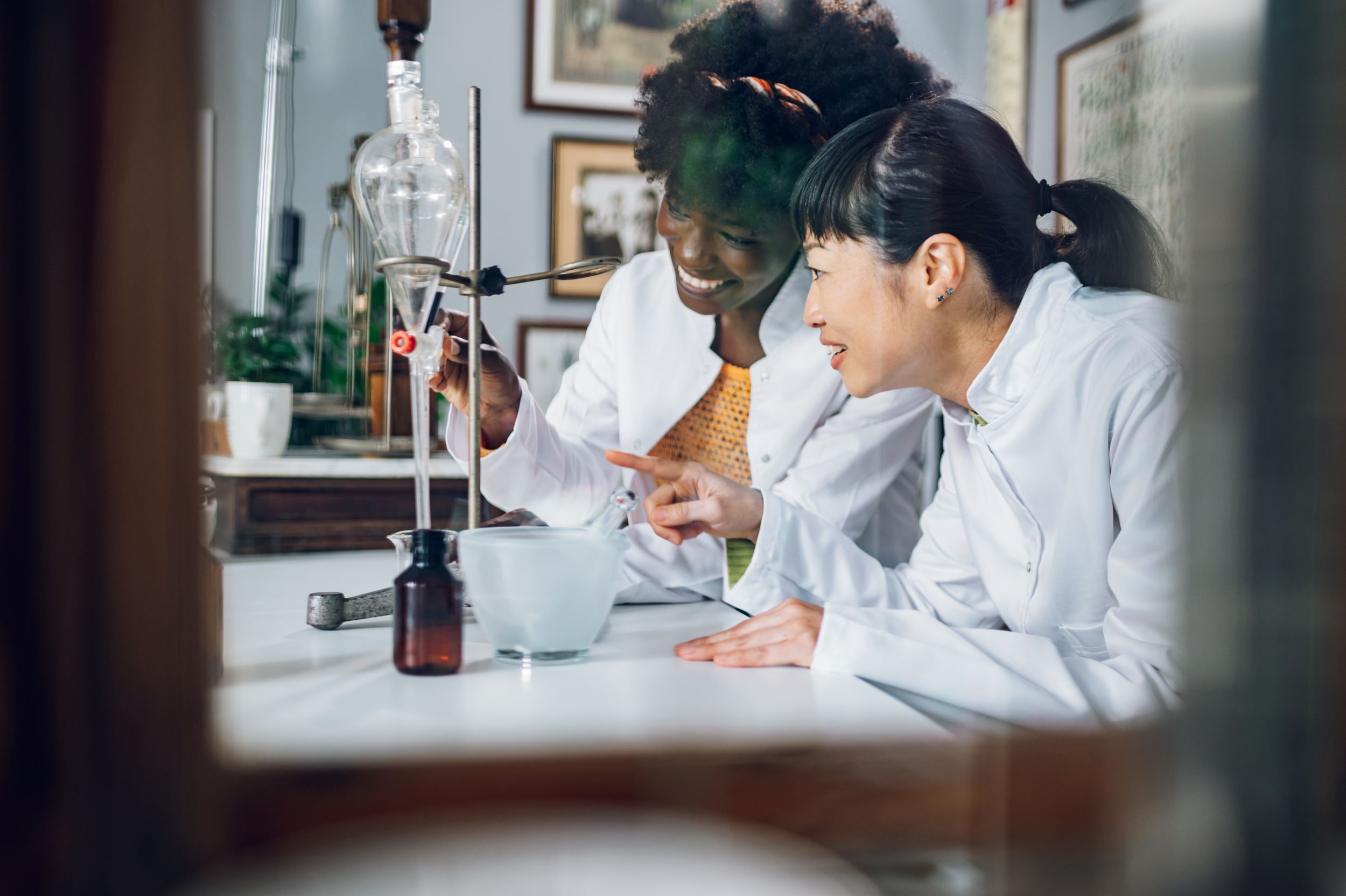Overview
Labster’s science educator team has curated a mini-collection of 5 simulations to help welcome students back to campus and set them up for success. This collection helps educators cover basic concepts early on in their course. Each simulation is designed to captivate students' attention, making complex chemistry concepts accessible and engaging. This is just the beginning: there are many more chemistry course packages and collections to choose from, as well as introductory titles such as Lab Safety, Chemistry Safety, and Experimental Design. Use the Back to School Chemistry Collection to enhance learning outcomes and watch your students thrive!
Atomic Structure (Principles): Atoms and Isotopes
In Atomic Structure (Principles): Atoms and Isotopes, students will explore the building blocks of matter by constructing anions, cations, and isotopes in a safe, virtual environment. They’ll learn about protons, neutrons, and electrons, and use nuclear symbol notation to identify elements and their properties. This simulation also includes a mission to an exoplanet, adding an adventurous twist to atomic theory.
Learning Objectives include:
- Explain the concept of an atom
- Explain the properties of the basic subatomic particles: protons, neutrons, and electrons
- Use of the nuclear symbol notation to deduce the number of protons, neutrons and electrons in atoms and ions.
- Define atomic number and mass number
- Define isotopes and ions
- Describe how the atomic number and mass number apply to isotopes

Physical and Chemical Properties: Escape the Lab!
In this thrilling escape room simulation, students must apply their knowledge of physical and chemical properties to survive and escape a dangerous lab environment. They’ll identify conductivity, flammability, and reactivity of materials to create a fire-resistant suit and unlock the final escape hatch.
Learning Objectives include:
- Define what a physical and chemical property is
- Identify and recall examples of physical and chemical properties
- Classify different properties as either physical or chemical
.jpeg)
Balancing Equations: Mastering the Process
In the Balancing Equations practice activity, students will dive into the art of balancing chemical equations, starting with simple reactions and progressing to complex polyatomic ion equations. This practice-based simulation offers a step-by-step approach to mastering this essential skill, making it both challenging and rewarding.
Learning Objectives include:
- Practice balancing a variety of chemical reactions, ranging from simple to complex

Energy Surfaces and Spontaneous Reactions
This simulation introduces students to core thermodynamics concepts such as entropy, enthalpy, and Gibbs free energy. They’ll visualize exothermic and endothermic reactions and apply Hess’s law to calculate reaction enthalpies. Interactive games on reaction spontaneity provide a dynamic learning experience.
Learning Objectives include:
- Define the core thermodynamics concepts of entropy, enthalpy, and free Gibbs energy
- Explain the second law of thermodynamics
- Understand and apply the concept of reaction spontaneity
- Explain the differences between the enthalpy of combustion, and enthalpy of formation
- Present Hess's law in connection with performing enthalpy change calculations
- Present the concepts of exothermic and endothermic reactions
.png)
Introductory Lab
In the Introductory Lab, students will cover the basics of laboratory safety, pH calculations, diffusion and osmosis, and blood typing. They’ll perform virtual experiments, including mixing acids and bases, observing cell behavior in different environments, and conducting blood type tests, preparing them for real-life lab work.
Learning Objectives include:
- Understand the basics of safety in the laboratory
- Calculate pH of strong acids, weak acids, strong bases and weak bases
- Understand how acid dissociates in water
- Understand the principle of diffusion and osmosis
- Understand the different blood type groups and how to perform blood type test

You can browse this collection, and review and assign individual simulations, by opening the Labster Catalog through your Course Manager or LMS login.
Download the Guide
Share a PDF version.








